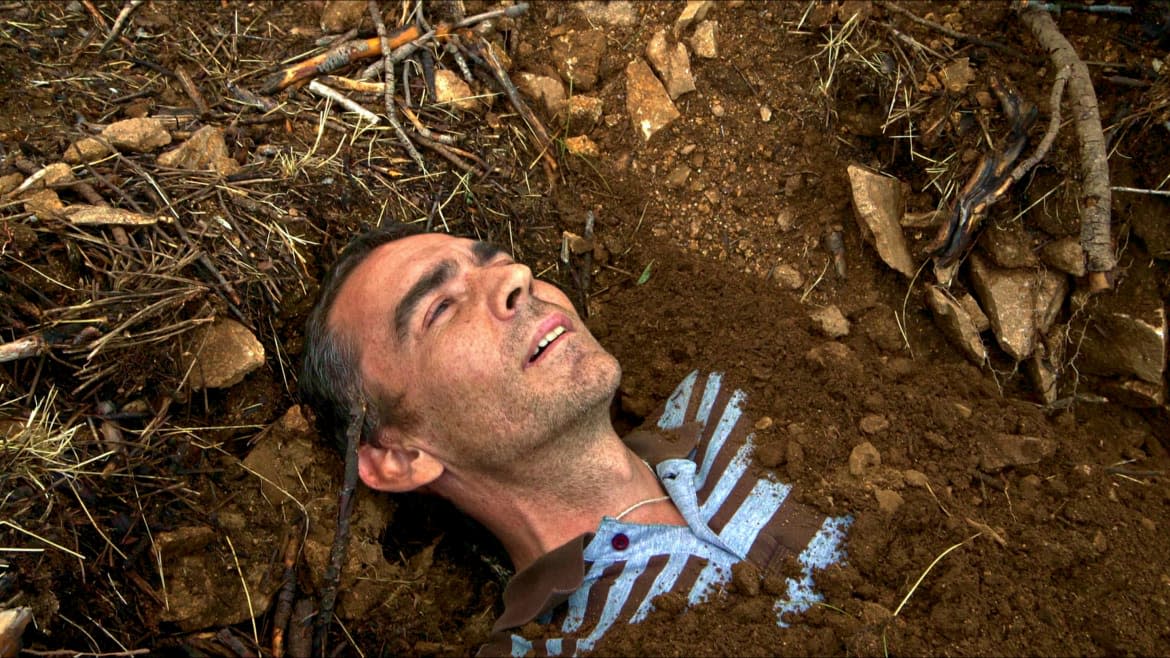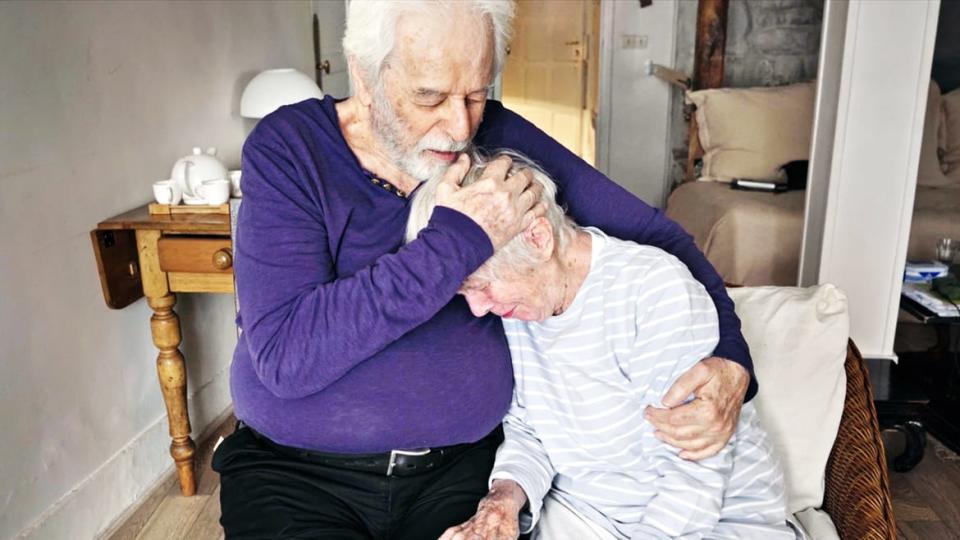This Director Claims to ‘Heal’ People by Burying Them Alive and Having Them Paint With Menstrual Blood

Chilean-born Alejandro Jodorowsky is a one-of-a-kind filmmaker who combines religious, psychoanalytic, spiritual, and surrealistic traditions to create something bewilderingly, exhilaratingly unique. Be it in his celebrated ‘70s classics El Topo and The Holy Mountain, or his more recent semi-autobiographical fantasies The Dance of Reality and Endless Poetry, his cinema bursts with influences, outrageousness and life. And yet one need not be an expert on his oeuvre to enjoy Psychomagic, A Healing Art, his new documentary (premiering Aug. 7 on Alamo on Demand) about another facet of his creativity: healing people through decidedly idiosyncratic therapeutic means.
I’m referring, specifically, to psychomagic. As Jodorowsky explains to the camera during the film’s 2018 prologue, “Psychomagic is a therapy through acts…[it] invites the therapist to touch the people who consult him. This form of healing beyond words was born to me fifty years ago in the form of initiatory massages.” In a subsequent 2006 TV interview, he elaborates: “Dali said he wanted to bring dreams into reality. I followed the anti-surrealistic way, the opposite. I said, everything is in the unconscious. One can’t teach the unconscious to speak the language of reality. Reason needs to be taught to speak the language of dreams.”
Inside ‘Out of Shadows’: The Bonkers Hollywood-Pedophilia ‘Documentary’ QAnon Loves
Unlike psychotherapy, which is conducted via dialogue, psychomagic is a hands-on practice in which patients undergo symbolic performative acts that speak to their traumas and desires—and in doing so, they confront and transcend that which is most plaguing them. In theory, it sounds unconventional but straightforward. But in practice, psychomagic is, per Jodorowsky tradition, more than a bit out-there.
Take, for example, a video clip of his maiden psychomagic massage. In a white-walled performance space, Jodorowsky stands with two young men (wearing matching blue shirts and jeans), grabbing their noses, cradling their heads, and rubbing their faces and bodies beneath their clothes, all as they yell, moan, grapple and embrace each other. Soon, a woman appears and partakes in similar behavior, clutching and caressing them as they cry out in primal torment and release. Jodorowsky eventually winds up on the floor with this trio, one of the men’s feet pressed against his forehead as he rubs the guy’s calf beneath his jeans. When it’s all over, the central duo are hugging each other in what appears to be exhausted bliss.
This bizarro scene is a fitting introduction to psychomagic, which is then demonstrated again in diverse cases. A woman with deep-seated mommy hang-ups is cut out of her clothes, placed between the legs of a naked female psychomagician, and figuratively “reborn,” replete with the cutting of an umbilical cord and drinking milk at the breast of her “mother.” A fragmented couple walks through Paris with long chains tethered to their ankles until they’re freed of this burden, and each other. A Mexican woman overcomes the guilt she feels about the suicide of her fiancé—who threw himself out of a window before her eyes—by skydiving. A man allows himself to be buried alive, with vultures pecking at his grave. Various nude women paint self-portraits in their own menstrual blood in order to proudly reclaim their periods as part of their inherent selves. And a 47-year-old stutterer is taken to a church where he strips, covers his crotch in paint, and is then coated in gold by two other men before walking through city streets, speaking fluidly.
Psychomagic, A Healing Art’s tales strive to illustrate that individuals can deal with their problems by carrying out acts that have a meaningful relationship to them. Often, Jodorowsky prefaces one of these segments with a short snippet from his own canon—say, from 1989’s Santa Sangre or 1969’s Fando y Lis—to underline how he uses his movies to grapple with such dilemmas, and the effect of those juxtapositions is to create a harmonious connection between the artist’s cinematic and therapeutic interests. For Jodorowsky, art and life, performance and reality, are fundamentally intertwined, and the fact that Psychomagic, A Healing Art’s non-fiction action is, in fact, staged for the camera—and thus something of a performance for both his subjects and for us, the audience—only furthers that notion.

As with the aforementioned stutterer, and also an elderly woman lamenting her “failed” life of luxury and disinterest in others, the root causes of these people’s agony isn’t always 100 percent clear. Nonetheless, that fuzziness doesn’t impede the film’s depiction of Jodorowsky’s methods, such as with said elderly woman, who’s told to water an aged tree so she can develop a connection, and responsibility, to the world. Psychomagic is about literally getting in touch with one’s suffering (no matter what form it takes), and experiencing something artificial that allows one to feel a genuine sense of relief, joy, and peace. It’s engaging in constructed routines to tap into authentic truth.
In its vignettes of the director working one-on-one with men and women in distress, Psychomagic, A Healing Art posits Jodorowsky as an empathetic avant-garde guide and shaman. Where its portrait of psychomagic veers from wacko if harmless, to potentially dangerous, is in a later chapter titled “Can Cancer Be Cured?” In footage from a 2008 Santiago, Chile, performance at the packed Teatro Caupolicán, Jodorowsky brings on stage a woman who’s battled thyroid cancer for the past twenty years, and instructs the audience to send her positive healing energy by stretching their arms out toward her. It’s a sight straight out of a tent revival, and no matter the 10-years-later testimonial of the woman—who claims that “an immense door opened towards a healing which goes beyond what doctors say. I understood that healing exists, and I understood that healing comes from inside”—it renders psychomagic as a gateway to non-scientific quackery.
Get our top stories in your inbox every day. Sign up now!
Daily Beast Membership: Beast Inside goes deeper on the stories that matter to you. Learn more.


